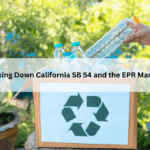The most easily recyclable part of a motor vehicle is its metal component, but there’s a lot more to a modern car than that. Although scrap yards recycle as much as they can (tyres, useful engine components etc), a significant amount of the average ELV, or end-of-life vehicle still ends up in landfill sites. Much of this content contains substances, such as lead, which are hazardous to the environment and our health. For this reason, the ELV directive was introduced.
The ELV directive was imposed by the EU to ensure a minimum level on vehicle recycling, and in a sustainable fashion. Introduced in 2000, and legally implemented in 2006, the ELV directive states that at least 80% of each ELV vehicle in the EU must be recovered for recycling, with a further 5% retrieved for use in energy-recovery processes. By 2015, these environmental compliance figures will rise to 85% and 10%.
An ambitious plan, fraught with difficulty, the status report for November 2005 stated that although most member states were trying to achieve ELV compliance, the targets were far from being reached. A lot of the problem lay in the plastic component. Metal, fuel, tyres, fluids, batteries etc can all be recycled easily. However this still left a shortfall of around 5% to meet the EU target. At present, a number of mechanical engineering companies are working on systems to recover automotive plastics.
We at Enventure Technologies offer a range of ELV compliance solutions, from master data management for recycling plants, to 3d modelling of novel hardware to furnish those plants.





